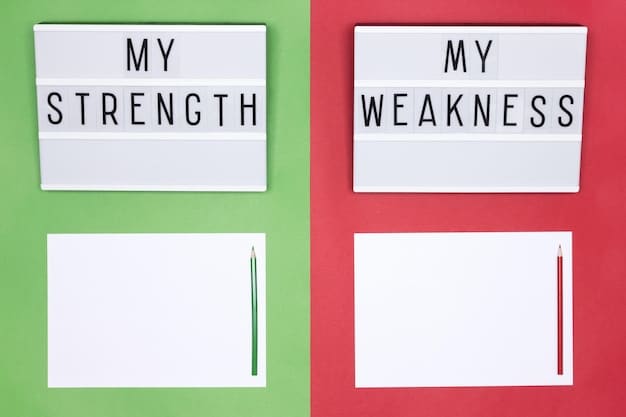The Impact of US Media Coverage on K-Pop’s Global Popularity: An Analysis

The Impact of US Media Coverage on K-Pop’s Global Popularity: An Analysis reveals how US media outlets have significantly shaped and amplified K-Pop’s worldwide recognition, influencing its reception, audience growth, and overall cultural footprint.
The phenomenal rise of K-Pop on the global stage is a fascinating phenomenon. This article delves into The Impact of US Media Coverage on K-Pop’s Global Popularity: An Analysis, exploring how American media has played a pivotal role in shaping and amplifying this cultural wave.
Understanding the K-Pop Phenomenon
K-Pop, short for Korean popular music, has transcended its national borders to become a global sensation. Its unique blend of catchy melodies, synchronized choreography, and visually stunning music videos has captivated audiences worldwide. But what factors have contributed to its exponential growth?
Several elements have propelled K-Pop’s rise, including social media virality, dedicated fan communities, and, crucially, media coverage. In particular, the influence of US media cannot be overstated.

The Role of Social Media
Social media platforms like YouTube, Twitter, and TikTok have been instrumental in disseminating K-Pop content. However, media outlets validate this presence.
- YouTube: K-Pop groups leverage YouTube to release high-quality music videos, behind-the-scenes footage, and variety shows.
- Twitter: Twitter serves as a hub for fans to connect, share news, and organize promotional efforts.
- TikTok: The short-form video platform has fueled viral dance challenges and trends, amplifying K-Pop’s reach among younger audiences.
These factors have contributed significantly to the genre’s visibility and accessibility.
Early US Media Coverage of K-Pop
The initial exposure of K-Pop to US audiences was relatively limited but crucial. Early coverage helped lay the groundwork for the genre’s eventual breakthrough into the mainstream.
Before K-Pop became a household name in the US, it had to overcome significant hurdles. Initial reports were sporadic and often relegated to niche or specialized publications.
Pioneering Media Outlets
Certain media outlets took the initiative to introduce K-Pop to American audiences, providing early coverage that helped cultivate interest and awareness.
- Billboard: Billboard, a leading music publication, was among the first to create dedicated K-Pop charts and cover the genre regularly.
- MTV: MTV featured K-Pop artists on its international channels, exposing them to a wider audience.
- The New York Times: Occasional articles in The New York Times and other major newspapers provided a level of legitimacy and recognition.
These early adopters helped establish K-Pop’s presence in the US media landscape, albeit on a smaller scale.
Mainstream Media’s Embrace
The shift from niche coverage to mainstream recognition marked a turning point for K-Pop in the US. Increased coverage in prominent media outlets significantly boosted its popularity and acceptance.
As K-Pop’s popularity continued to grow, mainstream media outlets began to take notice. Coverage expanded beyond music-specific publications to include general news outlets, talk shows, and entertainment programs.
Key Moments in Mainstream Coverage
Certain landmark moments in US media coverage played a crucial role in elevating K-Pop’s profile and attracting a wider audience.
Many appearances on high-profile television shows pushed awareness.
- BTS on the American Music Awards (AMAs): BTS’s performance at the AMAs in 2017 marked a significant breakthrough, introducing them to a broader audience.
- Blackpink at Coachella: Blackpink’s performance at Coachella in 2019 solidified their status as global superstars and generated widespread media coverage.
- Interviews on Major Talk Shows: Appearances on shows like “The Ellen DeGeneres Show” and “The Tonight Show Starring Jimmy Fallon” helped K-Pop groups connect with mainstream audiences.
These were important validations for the genre.
Positive and Negative Framing
US media coverage of K-Pop has not been without its complexities. The framing of these stories, whether positive or negative, has significantly influenced public perception.
Positive coverage has highlighted K-Pop’s innovative music, elaborate performances, and global impact. Negative coverage has often focused on controversies, cultural differences, and perceived industry pressures.

Examples of Positive Framing
Positive narratives have emphasized K-Pop’s cultural significance and artistic merits. Features about artist merit pushed the music into the hearts of the fans.
- Celebrating Cultural Diversity: Many articles have highlighted K-Pop’s role in promoting cultural exchange and understanding.
- Recognizing Musical Innovation: Positive reviews have praised K-Pop’s genre-bending sound and creative music videos.
- Showcasing Fan Dedication: Stories about K-Pop’s passionate fan base have emphasized their organizational skills and charitable endeavors.
These reports helped solidify the genre’s fame with many.
US Media’s Influence on Global Perception
The US media’s portrayal of K-Pop has far-reaching implications, influencing how the genre is perceived not only in the United States but also around the world.
The US media’s global reach and influence serve as a powerful amplifier for K-Pop’s message. Positive coverage can enhance the genre’s credibility and attract new fans worldwide. Conversely, negative coverage can tarnish its image and discourage potential supporters.
Impact on International Markets
The way K-Pop is portrayed in the US can affect its reception in other countries, bolstering its global appeal, confirming it as a legitimate musical force.
- Setting Trends: If US media embraces K-Pop, other countries are more likely to follow suit.
- Building Credibility: Positive US coverage can validate K-Pop’s artistic merit and cultural significance on a global scale.
- Attracting Investment: Increased US media attention can attract investment and partnerships from international markets.
Ultimately, US impact can be observed worldwide.
The Future of K-Pop in the US
The relationship between K-Pop and US media is likely to evolve further in the coming years. As K-Pop continues to grow in popularity, media coverage will likely become more nuanced and comprehensive.
Several trends could shape the future of K-Pop in America. Coverage will also include other themes.
Potential Future Trends
With increasing recognition, more change is inbound:
Diversity:
More tailored content:
- Deeper Dive into Artistry: Expect more in-depth profiles of K-Pop artists, exploring their creative processes and personal stories.
- Focus on Industry Issues: Media coverage may delve deeper into issues such as artist management, training systems, and mental health.
- Collaboration and Integration: Look for more collaborations between K-Pop artists and American musicians, as well as integration of K-Pop into US entertainment formats.
The future of the US and K-Pop is evolving and open to trends.
| Key Point | Brief Description |
|---|---|
| 🎤Early Exposure | Billboard and MTV gave K-Pop initial, crucial US visibility. |
| 🌟Mainstream Breakthrough | Performances at AMAs, Coachella, and talk show appearances. |
| 📰Framing’s Impact | Positive vs. negative framing affects K-Pop’s public perception. |
| 🌍Global Influence | US media trends set trends worldwide for K-Pop’s image. |
Frequently Asked Questions
▼
Early US media, like Billboard and MTV, provided the crucial initial exposure for K-Pop, establishing a foundation for its later mainstream success. These outlets gave K-Pop a platform to reach a broader audience.
▼
Social media platforms such as YouTube, Twitter, and TikTok have been vital. These platforms enable K-Pop artists to directly engage with global fans and spread their music virally.
▼
The framing of K-Pop in US media, whether positive or negative, shapes public perception. Positive framing promotes its cultural value and innovation, while negative framing highlights controversies, impacting global reception.
▼
US media’s global reach amplifies K-Pop’s message. Positive coverage can enhance the genre’s credibility and attract fans worldwide. Negative coverage can hurt its image and discourage supporters, impacting international markets.
▼
The future of K-Pop in the American media landscape is promising, with a shift toward more nuanced coverage. The focus might shift to deeper dives into artists and increased collaborations with American musicians.
Conclusion
In conclusion, the impact of US media coverage on K-Pop’s global popularity has been substantial and multifaceted. From the early days of niche coverage to the mainstream embrace of today, US media has played a critical role in shaping perceptions, driving trends, and amplifying K-Pop’s reach across the globe.





